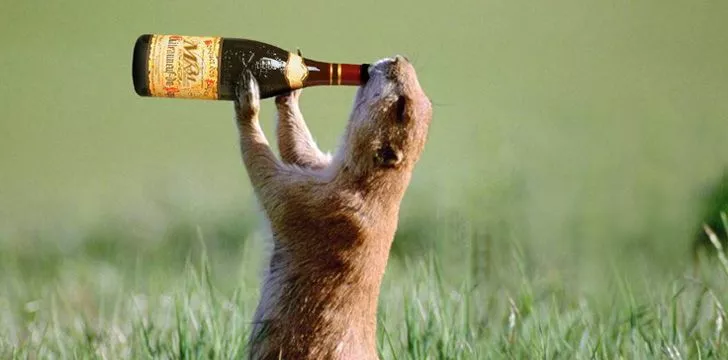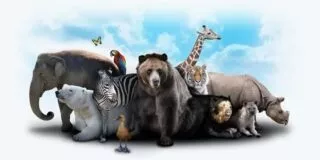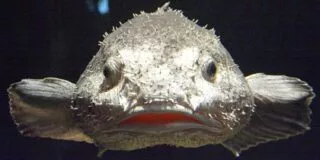Drinking is one of mankind’s oldest pastimes, steeped in rich history spanning back long before the supposed birth of Christ.
Did you know that “The Star Spangled Banner” (America’s National Anthem) was actually written to the tune of an old drinking song for example? Or that the world’s oldest known recipe is one for beer?
That’s right; alcohol has a long, long history and a great significance in mankind’s modern society – but what about in the animal kingdom?
Are there animals out there that like to indulge in a little tipple themselves?
Well you can rest assured, people aren’t the only living creatures to feel the wrath of a hangover!
From birds going to rehab and bees getting DUIs, to monkeys stealing cocktails and scrapping with each other, here is a list of 5 animals that get drunk in the wild and how they do it.
Pen-Tailed Tree Shrews & their bedtime beer nightcap.

In the rain forests of Malaysia lives the Pen-Tailed Tree Shrew, a small rodent no bigger than your average rat, which has a nightly thirst for fermented palm nectar.
Their poison of choice has an alcoholic content very similar to that of beer, and for about two hours every night these shrews will booze it up without fail!
Now this may sound like a drinking problem to us, but to these shrews it’s a way of life, and one they’ve lived for millennia.
In fact, this has been their way of life for so long that despite the huge amounts of daily drink they consume they don’t even get drunk!
Scientists believe that this mass nightly alcohol consumption is highly beneficial for the shrews, stating that they have a more adept metabolism when it comes to consuming alcohol, helping them avoid cardiovascular risk, and helping them consume more calories through the munchies!
American Bats that handle alcohol better than their Egyptian cousins.

Tropical bats from both Central and South America have been observed to regularly eat fermented fruits and nectar; however they are found to rarely feel the effects of the alcohol they consume.
Bats navigate during flight through the use of echolocation, which is like an inbuilt sonar system they have.
It was found that when they had a blood alcohol content of 0.3% (bear in mind all states in America require a driver to have a blood alcohol content of less than 0.08%) they were still able to navigate a tricky obstacle course and maze using their echolocation.
It was also discovered that the bats did not slur their words, so to speak, when using their echolocation.
However, the same study found that the same type of bats in Egypt crashed whilst navigating the same obstacle course a lot more.
Whilst the true reason for this is hard to pin down, the scientists believe that the Egyptian bats have a lower tolerance to alcohol as they have less fermented fruit to eat.
These scientists also say that the American bats’ tolerance gives them a distinct evolutionary edge, allowing them to eat food untouched by other animals and remain relatively sober.
Bohemian Waxwing Birds who have to go to rehab.
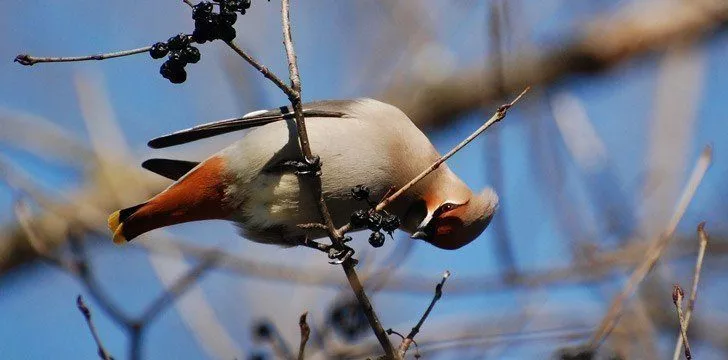
Bohemian Waxwing Birds are known to enjoy feasting upon the berries that grow on Rowan Trees, especially as the weather becomes cooler and the berries start to ferment.
Now only some of the birds eat the berries until they’re well and truly trashed, with most of the birds just getting a little buzzed.
But for those who don’t know when to stop, flying places becomes problematic – and dangerous – with a couple of drunken fatal crashes into buildings being recorded whilst under the influence.
In 2014 several of these birds became so intoxicated that they were taken to an animal healthcare and treatment facility in the Yukon, Canada, in order to sober up.
For those that weren’t able to recover there was another option – rehab, in the Yukon Wildlife Preserve!
Bees who gets DUIs.

Getting a DUI (Driving Under the Influence) is probably the most damning driving infraction a person can get.
Now imagine getting one of those for flying drunk.
Bees are known to get drunk from fermented nectar, and when drunk are very dangerous flyers, often causing accidents.
Some bees even get so wasted that they can’t even find their way back to the hive!
But those that do make it back to the hive have it far worse.
A study on drunk bees showed that when a bee returns to the hive drunk, the other bees will often block it from entering the hive until it has sobered up, sometimes attacking them in order to help them straighten themselves out!
And when they’ve eventually landed they’re often grounded until they’re safe to fly again!
The drunk Monkeys of St. Kitts.
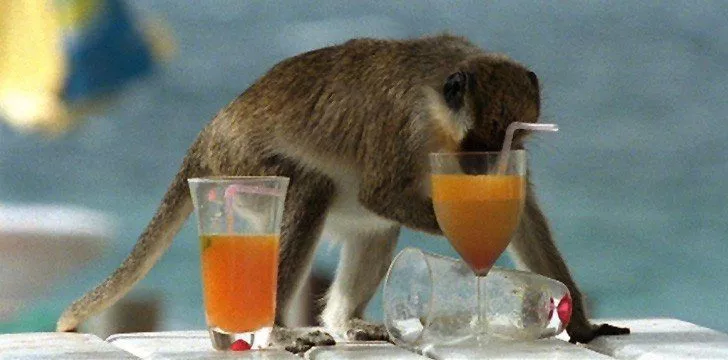
On the Caribbean island of St. Kitts there lives a population of wild Green Vervet Monkeys that are notorious alcoholics!
Way back when, the monkeys were notorious for stealing and eating the fermented sugar canes used to make rum, but as the rum industry has evolved so has the monkeys’ booze stealing methods.
Now a very popular tourist destination, St. Kitts’s beaches are often full of tourists kicking back and enjoying a cocktail.
However, not all those cocktails are consumed by tourists – oh no!
The Green Vervet’s are notorious for stealing the cocktails of unassuming beach goers.
A study conducted on these monkeys found that, much like us humans, the monkeys tend to split into four different categories of drinker: social drinker, steady drinker, binge drinker, and teetotaler.
Most of the monkeys are social drinkers who tend to only have a moderate tipple with other monkeys, although never before lunch.
12% are steady drinkers who enjoy more than their social drinking friends, 5% are excessive boozy binge drinkers, and only a small fraction are teetotal.
Those 5% that are classed as binge drinkers are notorious for stumbling about, vomiting, starting fights and binge eating until they pass out whilst under the influence!
The same study also found that juvenile monkeys drink more than adults and all of the monkeys much prefer a fruity cocktail.
